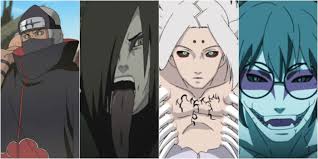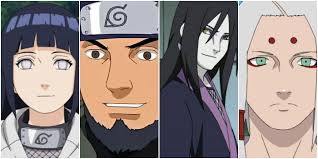
5 MOST OVERUSED TROPES IN THE NARUTO FRANCHISE
The Naruto anime series is a staple in the shonen genre, well-known for its engaging storytelling and use of classic tropes. While many of these tropes, like the power of friendship and the relentless pursuit of one’s dreams, have captivated fans, others have become worn-out clichés. As one of the most iconic anime series that has inspired countless fans and spurred a massive demand for anime merch in India, Naruto's use of these storytelling devices has been both a boon and a bane. From action-packed battles to deep character development, Naruto merchandise, including anime figures, anime hoodies, and other anime clothes, reflects the show's unique elements. However, some tropes were so overused that they lost their initial impact.
Whether you're exploring your favorite anime store near you or browsing an anime merch store online, the story's repeated use of certain tropes might make you wonder about the creativity behind the show. Here are five of the most overused tropes in Naruto that could have been scaled back for a more refreshing narrative.
-
Dojutsu
The concept of dojutsu, or eye-based techniques, was a fantastic addition to Naruto's combat system. Techniques like the Sharingan, Byakugan, and Rinnegan added layers of strategy to the battles, making the fights visually spectacular and memorable. However, as the series progressed, the focus shifted heavily towards these powers. It felt as if battles and plot developments were driven solely by who had the superior dojutsu, overshadowing other abilities.
For example, iconic battles like Sasuke vs. Itachi were dominated by their Mangekyo Sharingan, making it seem like everything revolved around eyeball supremacy. The constant focus on dojutsu even affected key plot points, like the control of the Ten-Tails, which relied solely on the Rinnegan. This trope became so overused that it lost its novelty, much like the feeling of seeing the same Naruto merchandise over and over in every anime store.

-
Too Many Villains Behind the Villain
A classic trope in shonen anime is the "villain behind the villain" twist, where a hidden mastermind is revealed behind every major threat. This can add depth when used sparingly, but Naruto overused it to the point of confusion. It began with Orochimaru and his underlings, only to escalate in Shippuden with the convoluted hierarchy of the Akatsuki.
The constant shifts in villainy made it hard to pinpoint who the true antagonist was. From Pain, posing as the leader of the Akatsuki, to Tobi pretending to be Madara, and eventually revealing himself as Obito, the series kept pulling back layers. And just when fans thought they had reached the ultimate villain in Madara, Kaguya Otsutsuki was introduced out of nowhere. It was like going into an anime merch store looking for a specific item and constantly being redirected to something else entirely.
-
Betrayal Happens Far Too Often
Betrayal is a powerful narrative tool that can shock and engage viewers, but Naruto leaned into it heavily. The series is filled with characters switching sides or betraying their closest allies, often to advance the plot. Sasuke’s betrayal of Team 7 was impactful and set the tone for the series, but subsequent betrayals started to feel repetitive.
Characters like Obito, Itachi, and even minor players like Karin fell into this pattern. Even Madara was betrayed by Black Zetsu, which felt like the final straw. As engaging as these plot twists were initially, the constant betrayals made it hard to keep track of loyalties. It’s akin to a fan being torn between buying Naruto merchandise or One Piece merchandise in an anime merch store—only to end up feeling overwhelmed by too many choices.

-
Naruto is the Classic Himbo
Naruto Uzumaki’s character is rooted in the shonen tradition of the loud, brash, but well-meaning protagonist. While this made him endearing at first, his himbo nature—being dense and foolish—was overplayed, often making him a comedic relief even in serious situations. Naruto’s clumsy, naive demeanor was charming to a point, but his slow growth into a wise leader felt like it took too long.
Much like how fans enjoy wearing an anime hoodie of their favorite character, Naruto’s quirks initially felt comforting. However, just as one might eventually tire of the same design, Naruto’s repeated foolish behavior started to wear thin. His growth into maturity was delayed by his need to fulfill the role of the typical shonen protagonist.
-
Naruto's Powers Always Save Him in the Nick of Time
Naruto’s powers, especially his bond with the Nine-Tails, Kurama, were a double-edged sword. While these abilities made for some of the most epic battles, they also served as an overused plot device to bail Naruto out of tough situations. Whether it was his battle against Pain or his fights in the Chunin Exams, Kurama’s power was often Naruto’s trump card.
It’s reminiscent of collecting anime merchandise where every figure looks amazing, but after seeing the same power-ups repeatedly, the excitement wanes. Fans may love Naruto merchandise, but even the coolest designs can lose their appeal if they’re overdone. The reliance on Kurama’s strength took away from Naruto’s personal growth, reducing the stakes in many of his battles.
Naruto remains a beloved series that has inspired countless fans to collect anime merch in India, from figures to hoodies and more. Click here for the coolest and craziest anime merch in india! However, these overused tropes remind us that even the best series can fall into the trap of repetition. As the anime landscape continues to evolve, new series might learn from Naruto’s strengths and weaknesses, creating fresher narratives that still pay homage to the classics we love.
[The images used in this blog post are not owned by Anime Devta, they are just for entertainment purposes]
| ONE PIECE MERCHANDISE | ANIME MERCH IN INDIA | NARUTO MERCHANDISE | ANIME STORE | ANIME FIGURES | ANIME HOODIES | ANIME CLOTHES | ANIME MERCH STORE |
~Mimansa Sharma

